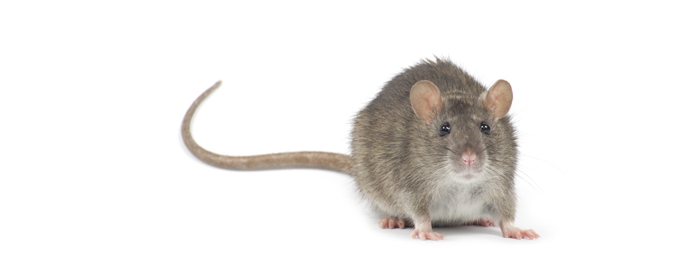Whats so Special About a Rat Tail?

Rats are unpleasant pests that can find their way into basements, attics and other hidden areas of your home. They’re also remarkable animals with fascinating anatomy. While you may not enjoy seeing signs of a rat in your home, you may enjoy learning more about their unique physical features.
At the first sign of rats in your home contact our rodent control experts at Truly Nolen Canada.
Why Rats Have Tails
Rats use their tails for two main purposes: balance and thermoregulation. Understanding these two purposes can be helpful before exploring the anatomy of a rat’s tail.
If you’ve ever seen a rat scamp up a rope, cruise around your home or scale a wall, you understand their need for balance. Rats use their tails to adjust their center of gravity, particularly when climbing on a rope or other difficult object. By making small tail adjustments, a rat can change its rotational inertia and reduce the risk of falling off a small object or precarious perch.
Scampering around your home or the great outdoors can be hard work for a rat. After exerting itself, a rat needs a way to cool down. Tails perform this task easily. Because rat tails don’t have fur and have a large number of blood vessels, they’re an ideal area for body heat to dissipate.
Both of these features are critical to the health and wellbeing of a rat, but there are some rodent species and mutations that don’t have a tail. Tailless rats have learned to adapt without this helpful body part, but are at a distinct disadvantage. A rat without a tail can’t cool down as fast or navigate difficult objects as easily as a tailed one.
All About Anatomy
Now that you know what a tail is for, you can better appreciate the fascinating anatomy of a rat tail. A cross-section of a tail reveals a few common and surprising features about its anatomy. Here are the anatomical components of a rat’s tail:
- Bone
- Tendons
- Lateral veins
- Dorsal vein
- Smaller veins
- Ventral artery
- Skin
Tail vertebrae give a rat’s tail a stiff structure and support as it navigates its surroundings. Thick tendons help the rat make minor movements and stay fully in control of its tail. Finally, multiple veins of varying sizes allow a rat’s tail to dissipate approximately 17% of its body heat in just 5% of its body surface area.
Beyond these features, there are few anatomical characteristics that can apply to every species of rat. Tail lengths range from surprisingly small to considerably longer than the rat’s body length. The thickness of individual rat tails can also vary. These variations provide interesting differences in the look and efficacy of rat tails, but don’t typically change the ways a rat can use its tail.
Tell Rats To Turn Tail and Leave Your Home
Rats are best appreciated from afar. While fascinating to learn about, rats are common carriers of diseases, pests and other hazards. They can significantly damage your home through clawing, biting and defecating. Some rat species make good pets, but most rats that find their own way into your home are best removed safely by a local pest control professional.
Understanding the specialized anatomy of a rat tail is very different than observing one in your own home. These rodents may be a great study, but they’re a terrible guest in your home. Schedule an inspection with our local team at Truly Nolen Canada to keep your home safe. We’ll monitor your home, spot any signs of an infestation and offer the proven rat removal and prevention techniques your home deserves.